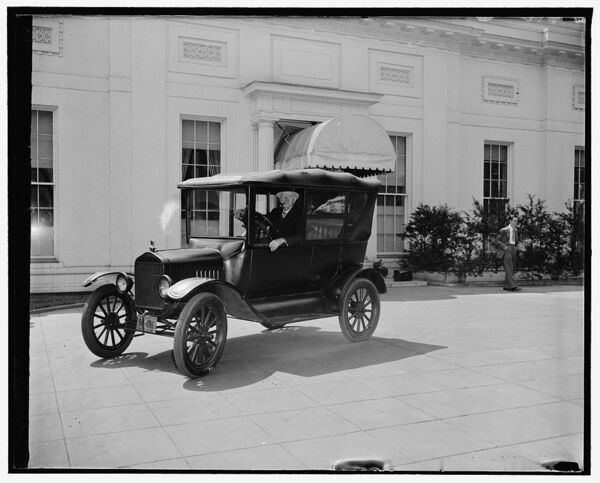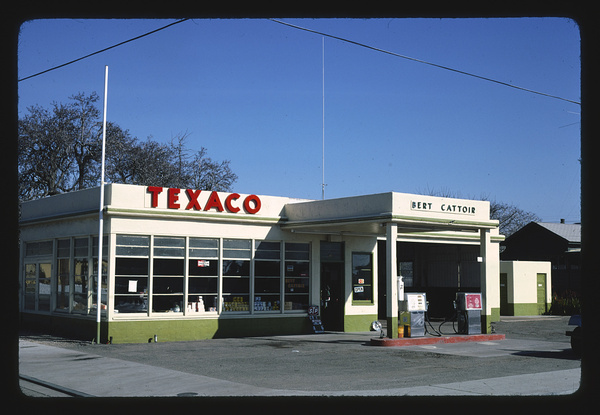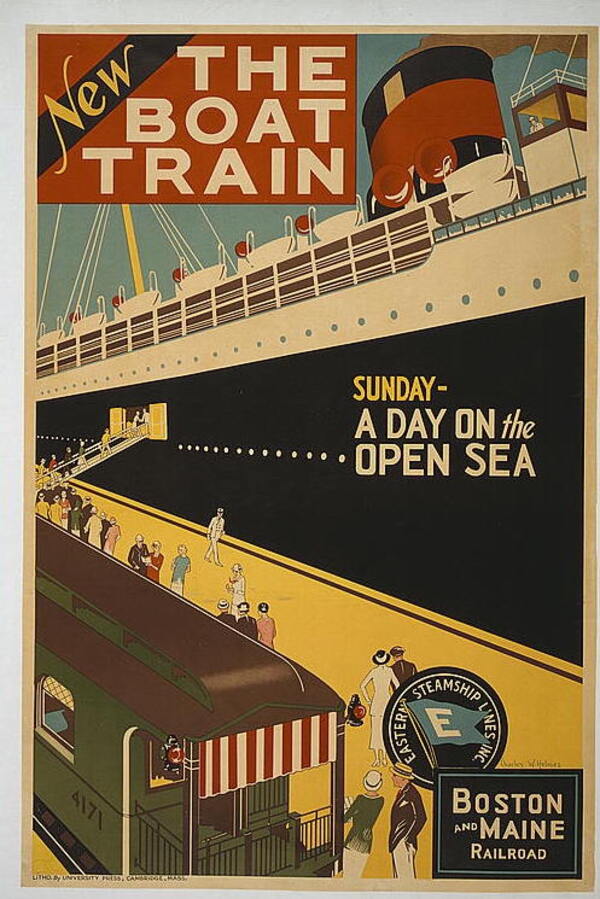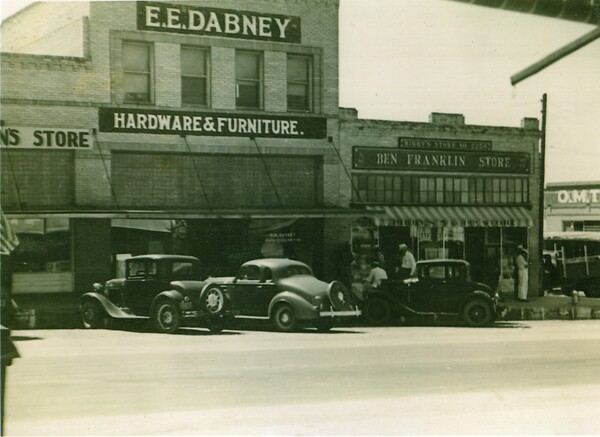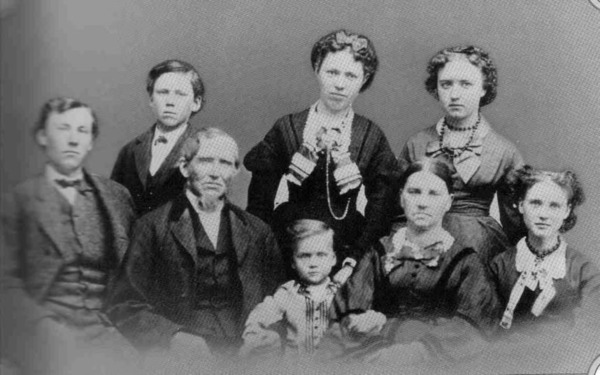The following 34 photos tell the story of the outbreak, battles, and end of World War II.
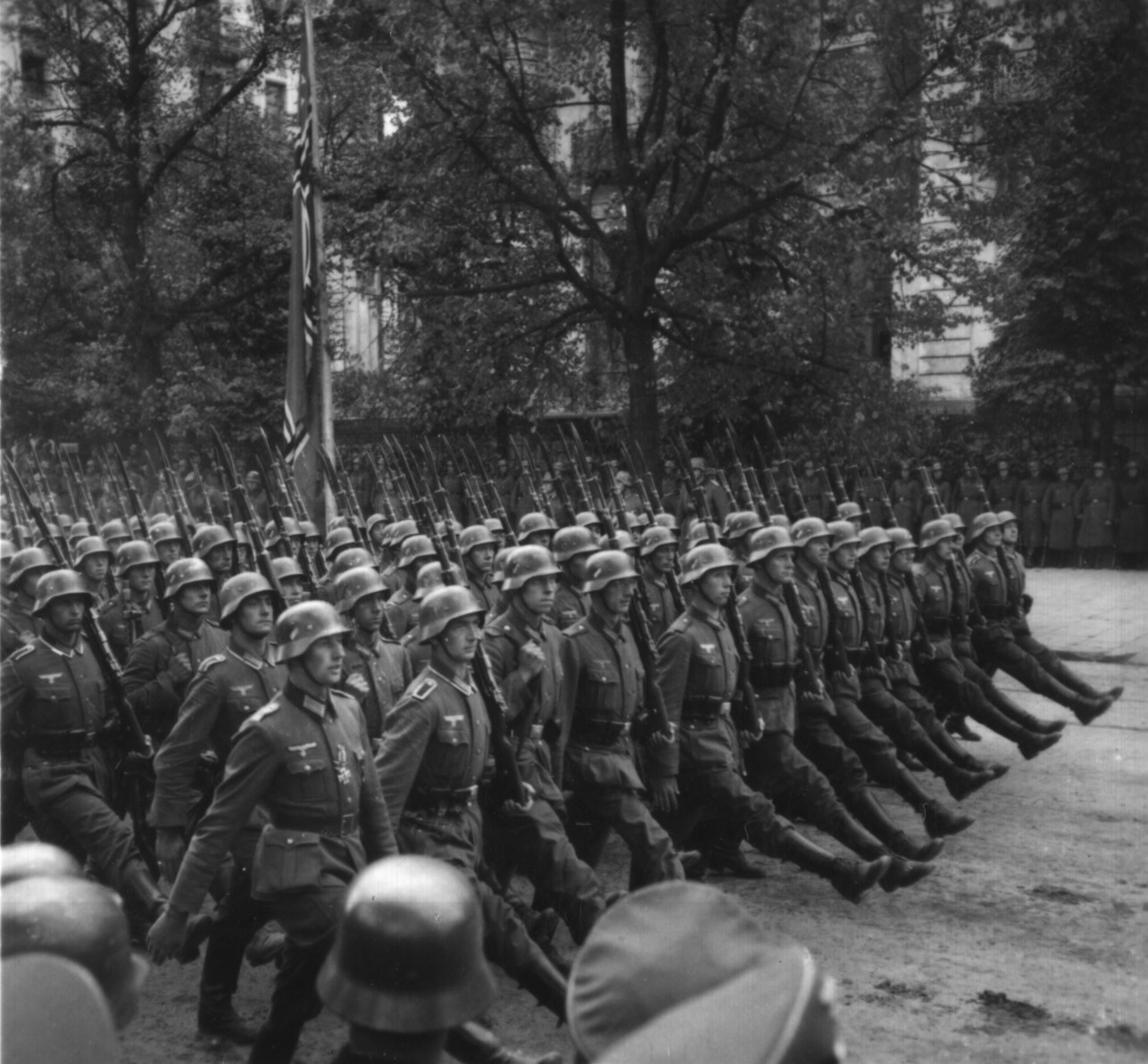
German troops parade through Warsaw, Poland. September 1939.

British prisoners at Dunkerque, France, June 1940
image:Hitler's_triumphant_tour_of_Paris__1940__1_.jpg
June 28, 1940, Hitler enters paris.

Aircraft spotter on the roof of a building in London. St. Paul's Cathedral is in the background, August 1940

"Children of an eastern suburb of London, who have been made homeless by the random bombs of the Nazi night raiders, waiting outside the wreckage of what was their home." September 1940.
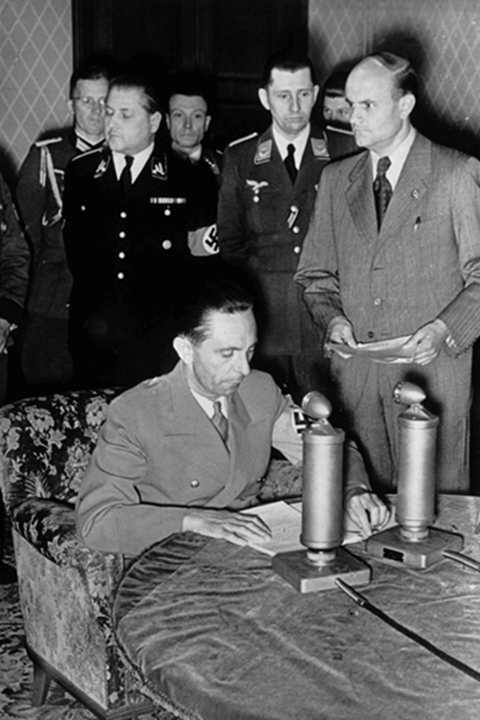
1941: Operation “Barbarossa”
German Minister of Propaganda Joseph Goebbels makes a radio announcement about the war with the USSR (June 22, 1941)
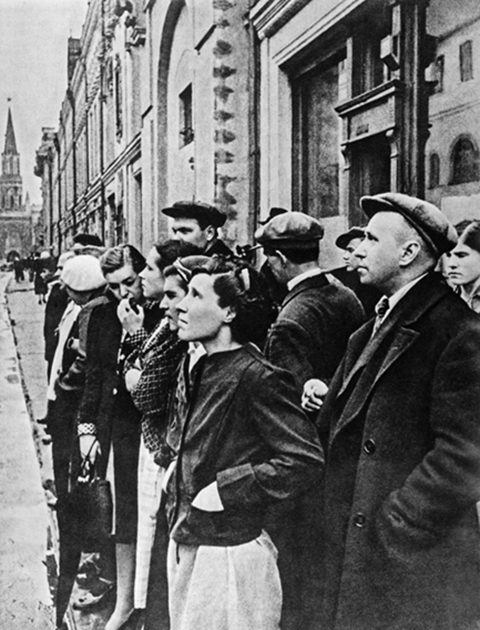
People in Moscow are listening to the war announcement, stunned (June 22, 1941)
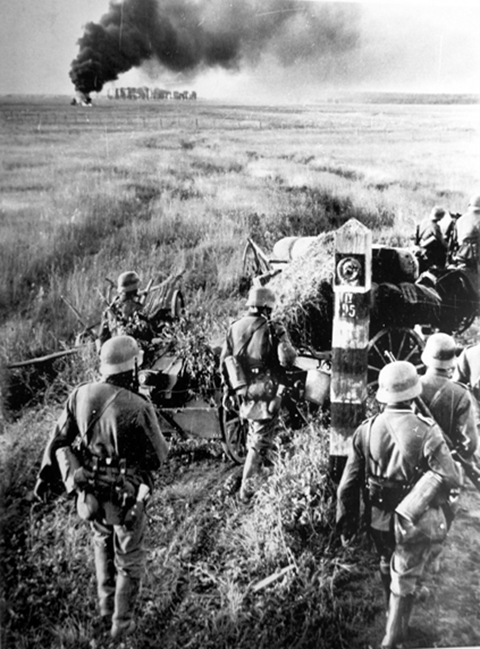
The largest invasion in human history begins. 4 million men supported by 600,000 vehicles and 750,000 horses attacked 3,000 kilometer-long front line. Photo: German soldiers crossing the USSR border (June 22, 1941)

Photo: Russian I-16 fighters destroyed at the airport near Minsk, Belarus (June, 1941)
The German attack was a complete surprise, and initial Soviet losses were catastrophic. After the first 9 days of war the Luftwaffe destroyed 1,400 Soviet airplanes in the air and 3,200 on the ground (40% of the entire USSR air force), while losing only 330 aircraft. By mid-August, the Soviets had lost 3,300 tanks, while the Germans lost 220, an astonishing 15:1 ratio.
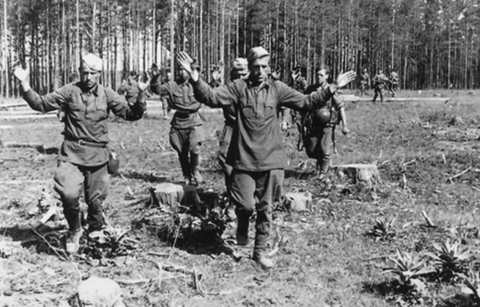
Photo: Soviet soldiers surrendering (Belarus, July 1941)
But the most devastating were human losses. By December of 1941, the USSR had lost 2.7 million soldiers killed and 3.3 million captured – its entire pre-war army. For every German soldier lost, the Soviets lost 20.
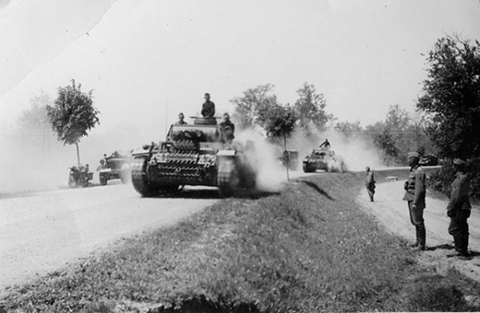
The German tanks were unstoppable. During the first 7 days of the invasion they penetrated 300 km into the Soviet territory - 1/3 distance to Moscow
Battle of Moscow
By November of 1941, Russia was in dire straits. Hitler declared that the war had been won, and cited the evidence: 2 million Soviet prisoners, 22,000 artillery pieces seized or smashed, 18,000 tanks destroyed, 14,500 aircraft shot down. The German army was just 10 miles away from Moscow, and the Soviets had only 90,000 men and 150 tanks left to defend it. The world regarded Moscow surrender as inevitable. To cheer people up, Stalin gave a military parade. Photo: These troops went into the battle straight from the Red Square (Moscow, November 7, 1941):
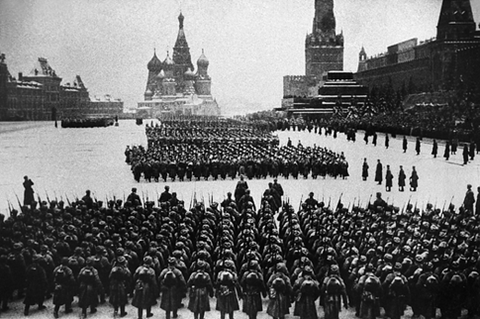
Desperate times required desperate measures. The Russians trained dogs to run under the German tanks in suicide attacks. Photo: dogs, wrapped in explosives, are walking into the battle (Moscow, 1941)
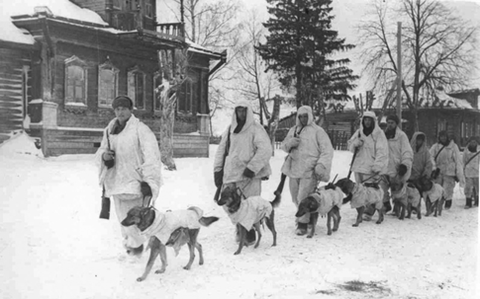
In December of 1941, the temperature fell to -35 C (-30 Fahrenheit), unusually low even for Russia. The German army was unprepared, and 130,000 cases of frostbite weakened its front line troops:

Fresh, well-equipped troops pushed the exhausted Germans back by 100-200 km. This was the first major defeat suffered by the German army in WW2, and the bloodiest battle to date: 1 million soldiers lost their lives in the Battle of Moscow. Photo: German soldiers surrendering (Moscow, January 1942)
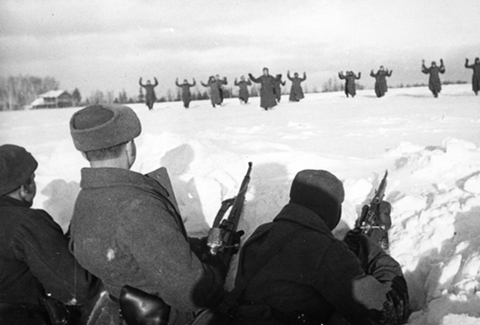
Attack on Pearl Harbor
Photograph taken from a Japanese plane during the torpedo attack on ships moored on both sides of Ford Island shortly after the beginning of the Pearl Harbor attack. View looks about east, with the supply depot, submarine base and fuel tank farm in the right center distance. December 7, 1941
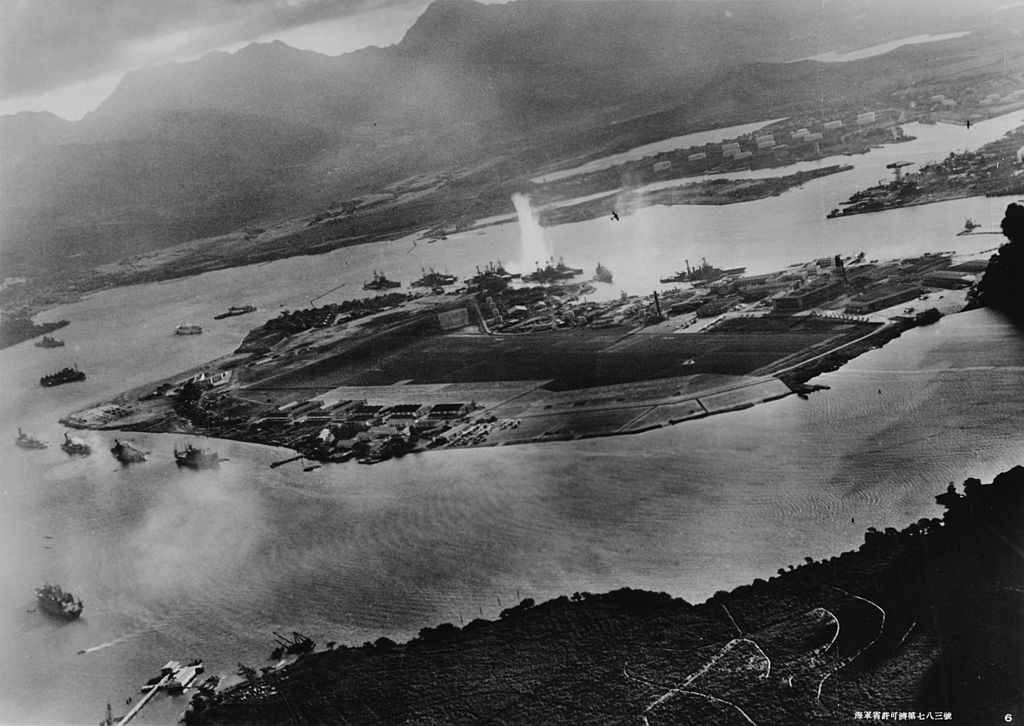
The USS Arizona (BB-39) burning after the Japanese attack on Pearl Harbor, 7 December 1941. USS Arizona sunk at en:Pearl Harbor. The ship is resting on the harbor bottom. The supporting structure of the forward tripod mast has collapsed after the forward magazine exploded

Siege of Leningrad
At the same time, German Army “North” attacked Leningrad, the second-largest USSR city of 3.3 million people. By September 19, 1941 the Germans were just 12 miles away, and their artillery began a continuous barrage of the city. Photo: an artillery shell explodes on a street of Leningrad (September, 1941):
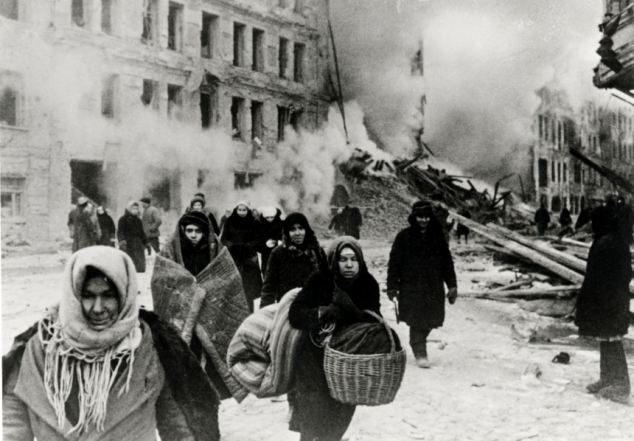
Leningrad was heavily defended, and Hitler made a decision to besiege it and starve to death. The city was encircled and the blockade started on September 25, 1941. At the time, Leningrad had sufficient food for 20 days; by December – despite reducing rations to the minimum - for 2 days. As a result, 600,000 - 1,000,000 civilians starved to death. People ate all dogs, cats, birds and rats in the city. 600 people were punished for cannibalism.
The only way to bring some food into the city was during the winter when the nearby lake Ladoga froze. The ice road was called "The Road of Life". It was very dangerous – during just the first week of operation, 40 trucks sunk. Photo: trucks delivering food to Leningrad through the Road of Life. Notice how all driver doors are open so that the drivers could jump out if their trucks suddenly fall through the ice:
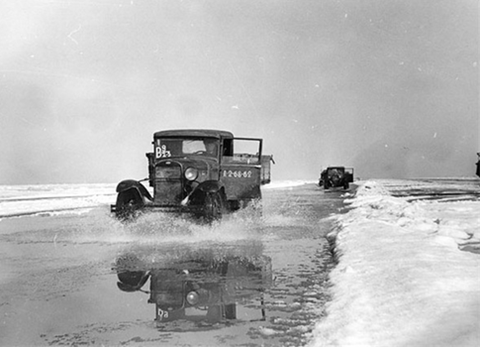
Stalingrad
On July 17, 1942 the German troops reached Stalingrad, a town of 400,000 people on the Volga River, and the bloodiest battle in human history had begun. Photo: this is how Stalingrad looked a few days before the battle (July, 1942):
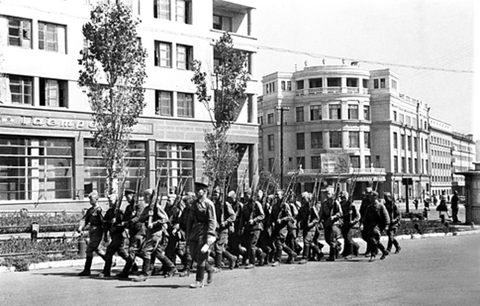
And this is how it looked when it was over, 6 months later (February, 1943):
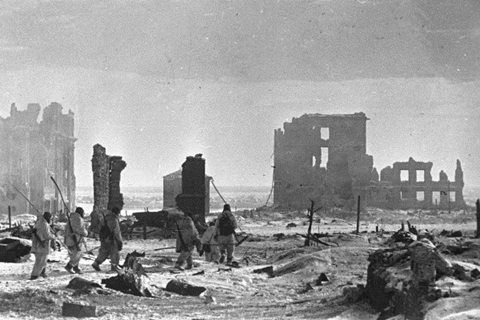
Hundreds of thousands soldiers clashed in the ruins for several months. The fights were fierce: an average life expectancy of a soldier in Stalingrad was 1 day. During the defense of Stalingrad, 1 Russian soldier died every 25 seconds. On November 19, 1942 the Russians launched an unexpected counter-offensive - Operation “Uranus”, and in 4 days surrounded the city, blocking 265,000 German soldiers inside. Attempts to break the blockade failed, and the Germans started suffering from exhaustion, starvation and cold.
Finally, on January 31, 1943 Ernst Paulus, the commander of the German army in Stalingrad, capitulated - against Hitler's orders. A 3-day National Mourning was announced in Germany, and came as a shock to the German public, who believed that the war was almost over. Photo: Field Marshal Paulus and his chief of staff after their surrender:
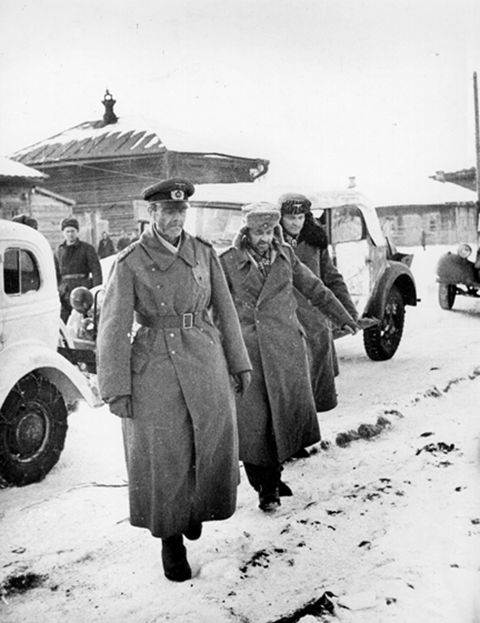
The Battle of Stalingrad was the bloodiest battle ever, with 2,000,000 casualties. For the first time since the invasion, German losses were almost as high as the Russians'. 25% of the entire German military strength on the Eastern front was destroyed. The Battle of Stalingrad marked the point were the Germans lost the strategic initiative for the rest of the war, and in Russia it is considered the turning point of WW2.
1943: Operation “Citadel” / Battle of Kursk
To take revenge for Stalingrad and regain the initiative, Hitler decided to launch a major offensive operation in the summer of 1943 near town of Kursk. By July, both sides had accumulated large forces. The Germans brought in 900,000 soldiers, 2,700 tanks, 2,000 aircraft and 10,000 guns. The Red Army deployed 1,300,000 soldiers, 3,400 tanks, 2,900 aircraft and 19,000 guns. Both sides also brought several new weapons into the battle. The Germans made a major upgrade to their armored forces: a very powerful tank destroyer “Ferdinand”, and 2 new tanks - “Tiger” and “Panther”. Photo: "Tiger" tank - perhaps the most advanced (but also the most expensive) tank of WW2. It was a formidable adversary: for every “Tiger” lost, the Russians lost 8 tanks:
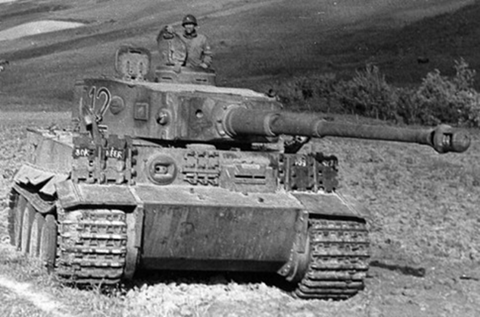
The Battle of Kursk became known as the largest tank battle in history. On July 12, 1943 two massive tank forces, 850 Soviet against 600 German, collided near village of Prokhorovka in an area of just 3 square miles. Tanks were dueling at point-blank range and often rammed into each other. The crews of the damaged tanks got out and engaged in a bitter hand-to-hand combat. The fighting raged for 8 hours and by the end of the day 700 tanks looked like this:
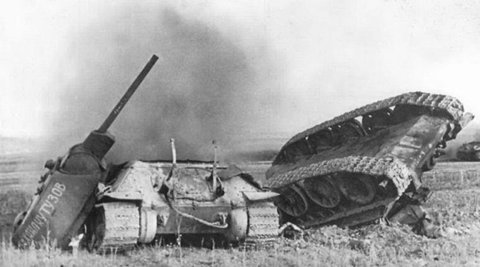
Liberation by Soviet soldiers of some of the surviving prisoners of Auschwitz. Above the gate of the camp is the famous sign-slogan “Arbeit macht frei” – “Work makes you free”. The concentration camp was discovered on January 27, 1945 by part of the 100th Infantry Division of General Fyodor Krasavina. 1st Ukrainian Front.
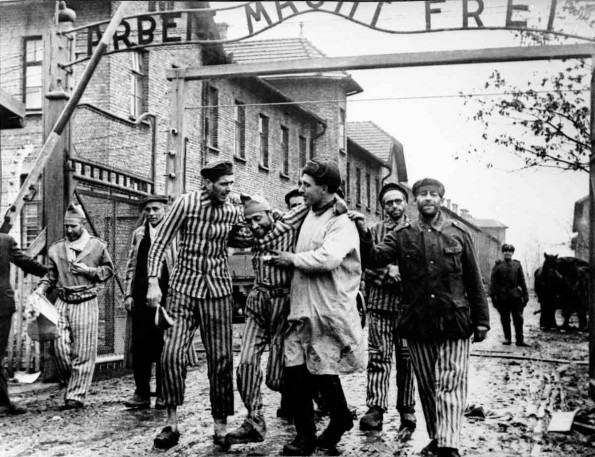
GIs tramp in review across an English field, 1944, as the long-planned Operation Overlord — the D-Day invasion of France — draws near. With 160,000 Allied troops taking part, the cross-Channel attack was the single greatest air-land-and-sea invasion in military history.

Cross-channel attack preparation. Courtesy: Frank Scherschel—Time & Life Pictures/Getty Images
1944: Operation “Bagration” / D-Day
On June 22, 1944, exactly on the third anniversary of German invasion in Russia, the Soviet Army lunched operation “Bagration” to support the Allied landing in Normandy, which started on June 6. “Bagration” became the largest Allied operation of World War II, and the worst German defeat – its entire Army Group “Center” was annihilated, opening the road to Berlin. Photo: a squadron of “Katyusha”s firing rockets at the German positions during operation “Bagration”.

300,000 German prisoners were taken in the operation. The Allies did not believe the numbers, and Stalin ordered to march the captive Germans through Moscow. Photo: German soldiers captured during operation “Bagration” walking in Moscow. The Russian crowd mocked: "You finally made it to Moscow!". September, 1944:
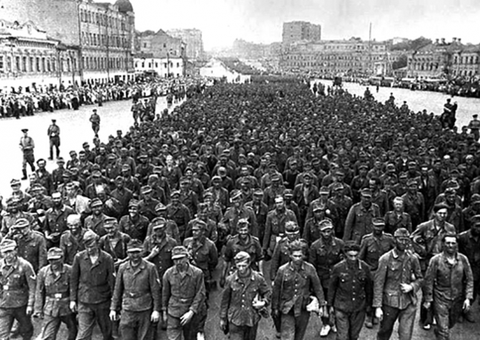
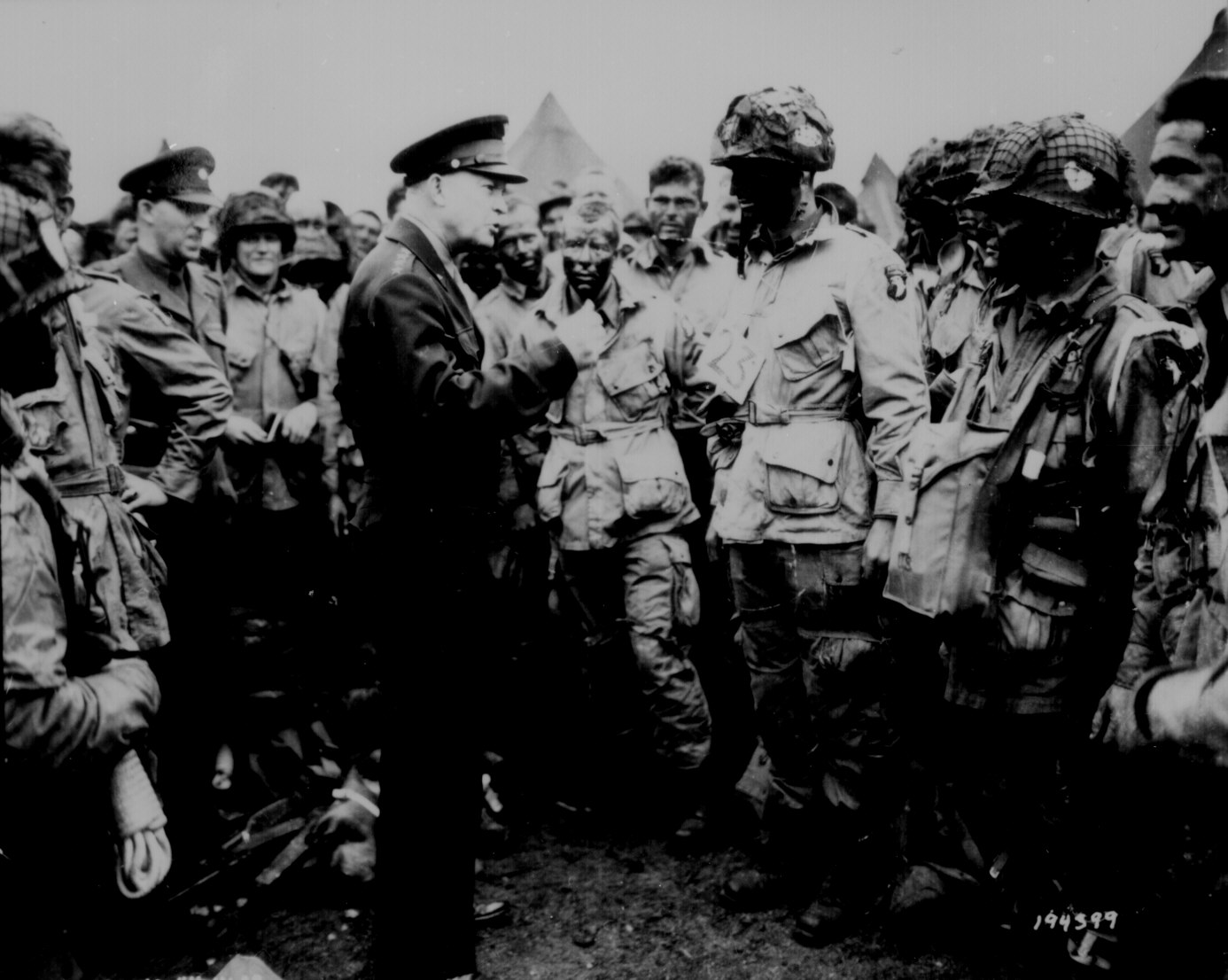
"Gen. Dwight D. Eisenhower gives the order of the Day. 'Full victory-nothing else' to paratroopers in England, just before they board their airplanes to participate in the first assault in the invasion of the continent of Europe." Moore, June 6, 1944
A LCVP (Landing Craft, Vehicle, Personnel) from the U.S. Coast Guard-manned USS Samuel Chase disembarks troops of Company E, 16th Infantry, 1st Infantry Division (the Big Red One) wading onto the Fox Green section of Omaha Beach (Calvados, Basse-Normandie, France) on the morning of June 6, 1944. American soldiers encountered the newly formed German 352nd Division when landing. During the initial landing two-thirds of the Company E became casualties. Chief Photographer's Mate (CPHoM) Robert F. Sargent
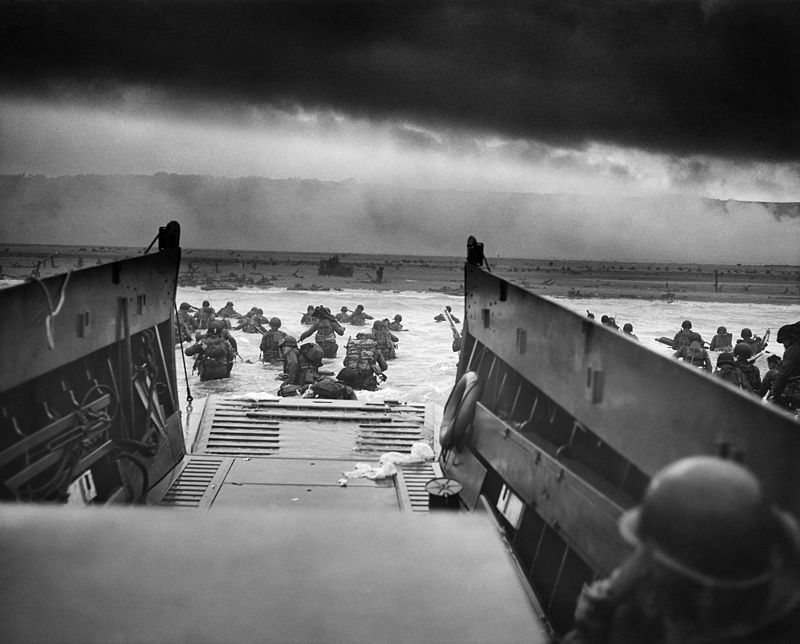
On June 6, 1944 (D-Day), the Allies invaded France, opening a long-awaited second front. Operation "Overlord" was the largest sea-to-land invasion in history, and perhaps the most logistically complex operation of WW2. It was also an example of the successful military cooperation among the Allies: to prevent the transfer of German forces from the Eastern to the Western front, the Russians simultaneously launched a major offensive in Belarus (Operation “Bagration”). Photo: Allies landing on Omaha beach, Normandy (June 6, 1944):
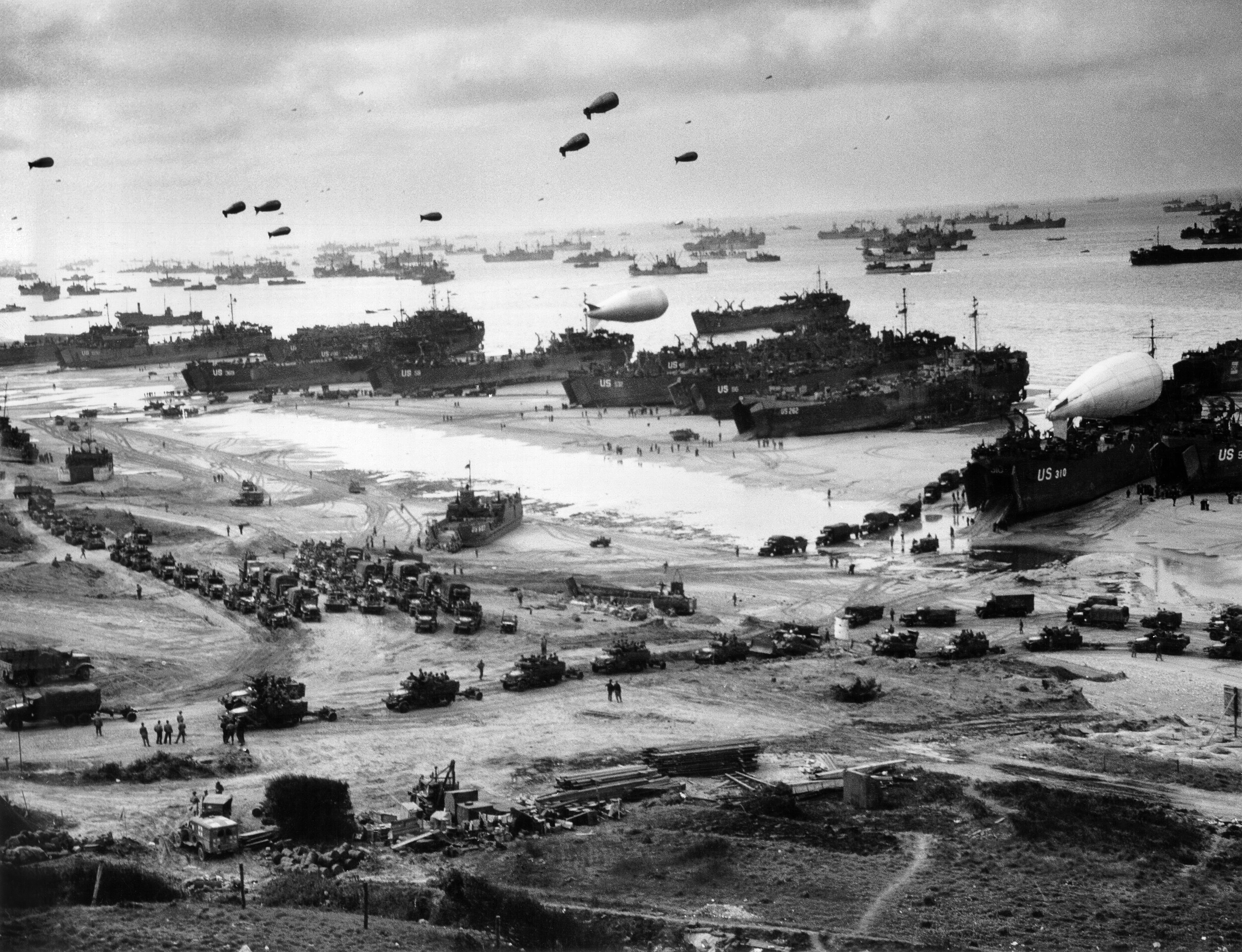
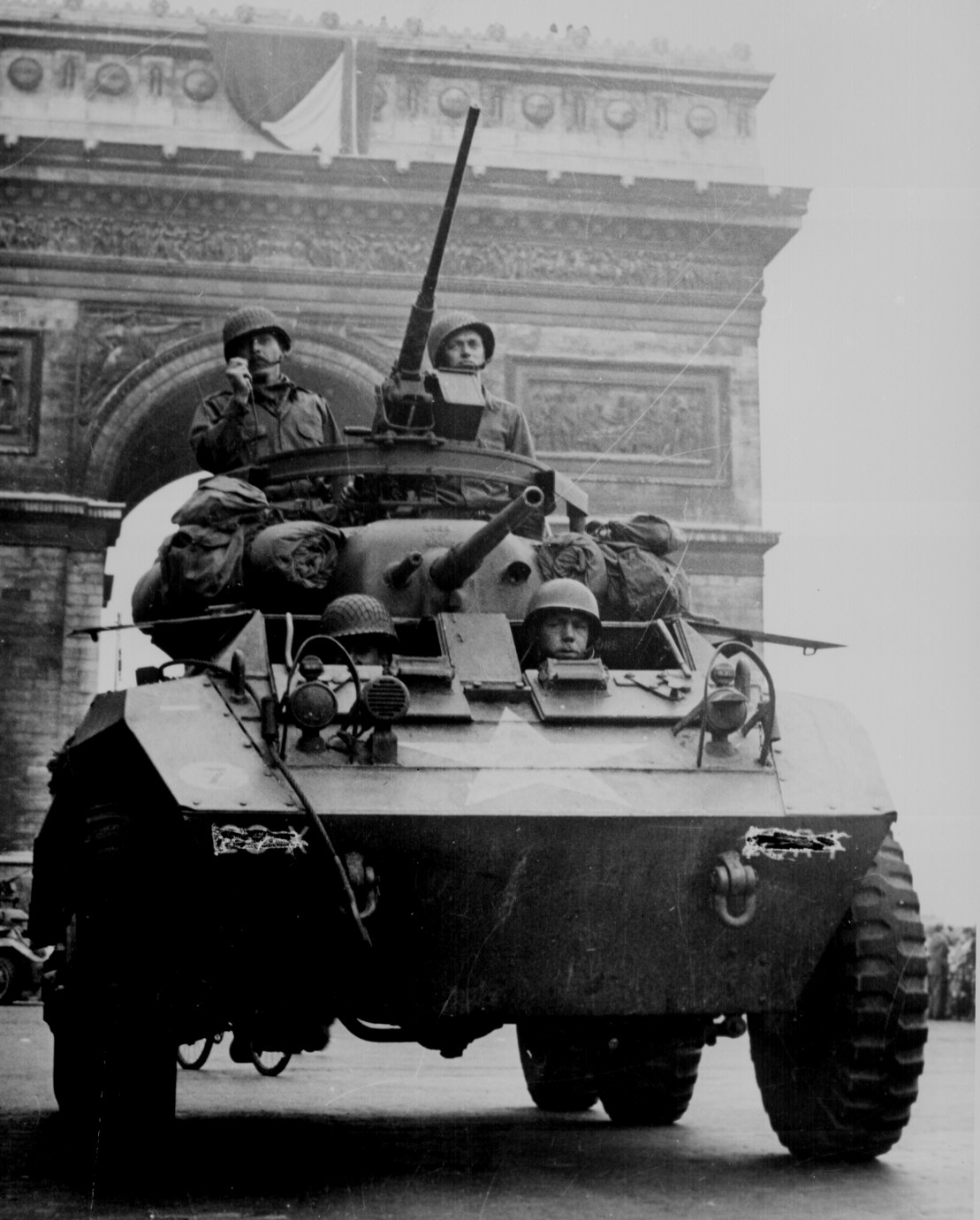
American troops in tank passing the Arc de Triomphe after the liberation of Paris, August 1944
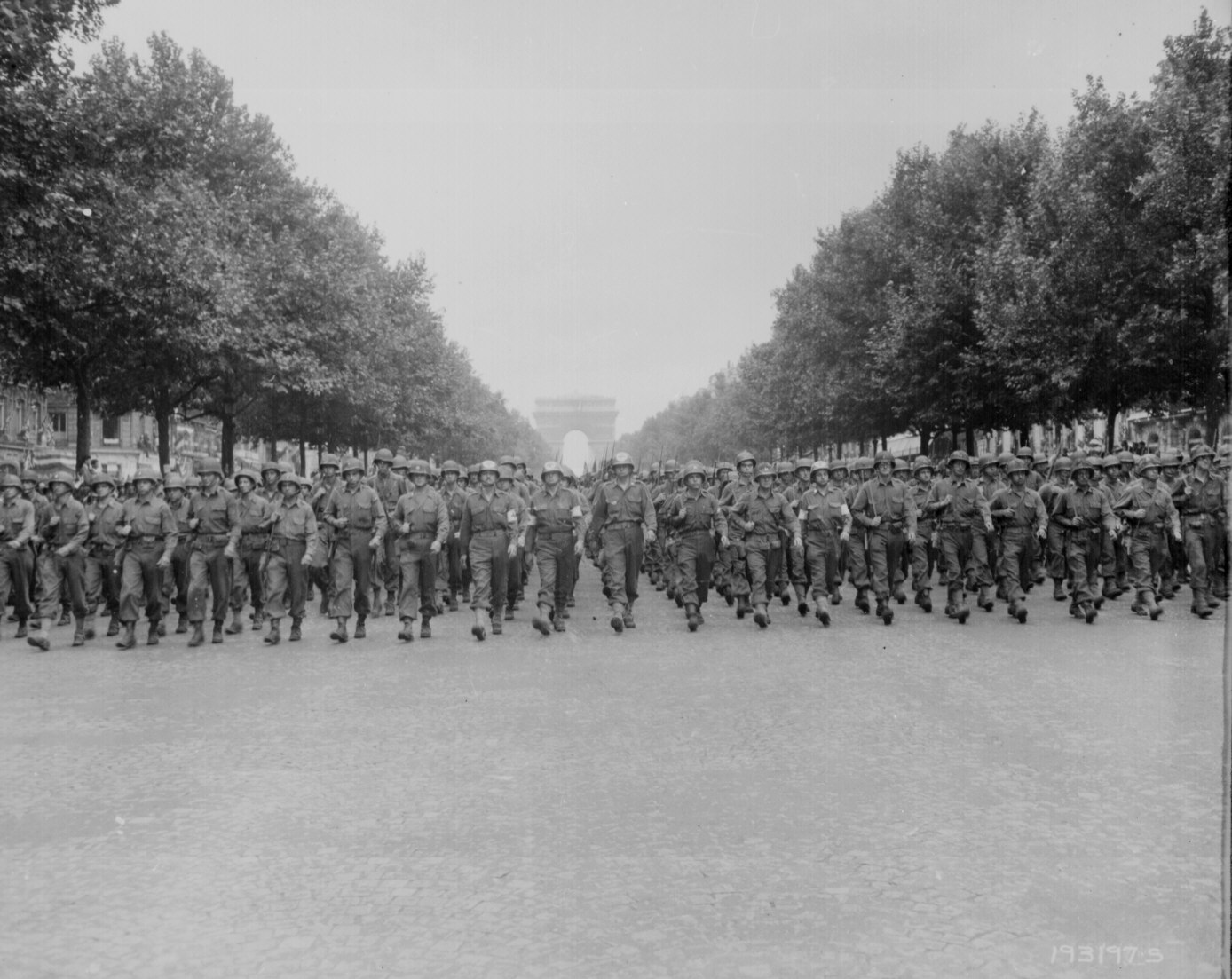
"American troops of the 28th Infantry Division march down the Champs Elysees, Paris, in the `Victory' Parade." Poinsett, August 29, 1944.
The Pacific
Gen. Douglas MacArthur wades ashore during initial landings at Leyte, Philippine Islands. October, 1944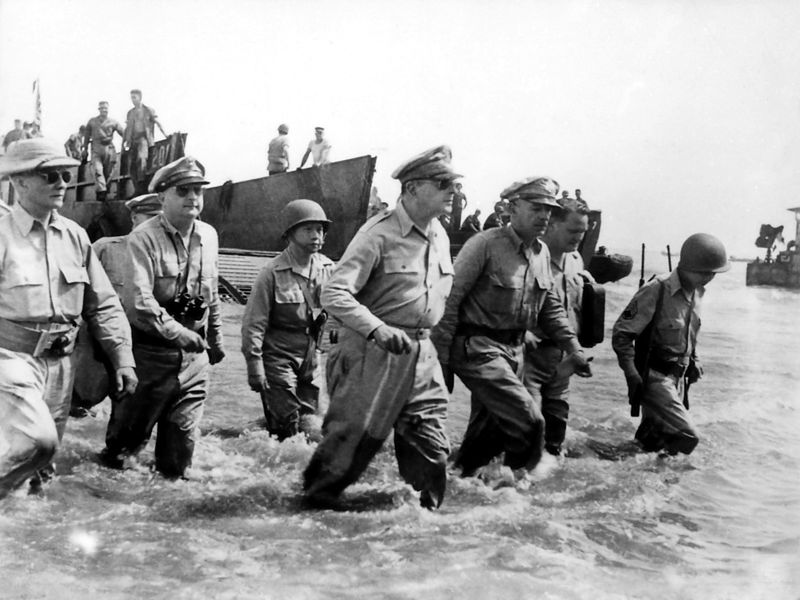
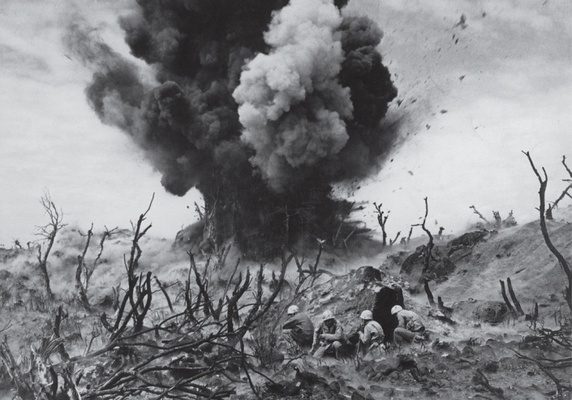
Courtesy: W. Eugene Smith—Time & Life Pictures/Getty Images
In a picture that captures the violence and sheer destruction inherent in war perhaps more graphically than any other ever published in LIFE, Marines take cover on an Iwo Jima hillside amid the burned-out remains of banyan jungle, as a Japanese bunker is obliterated in March 1945.
1945: Victory
The Germans made their last stand in Berlin: 1 million men, supported by 1,500 tanks, 2,200 aircraft and 9,300 guns defended the German capital. However, at this point they were overwhelmed: the Russians brought in 3 million men, 3,100 tanks, 7,500 aircraft, and 14,600 guns. Photo: German civilians watching Russian tanks rolling into Berlin:
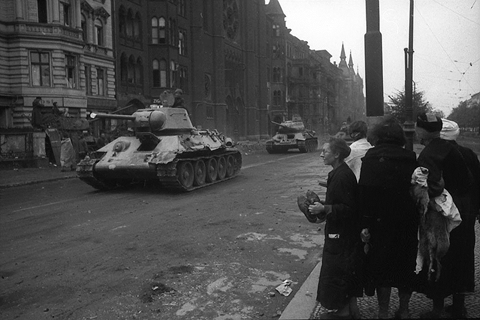
On May 7, the Germans surrendered to General Eisenhower in France. Photo: General Jodl signs unconditional capitulation (Reims, May 7, 1945):
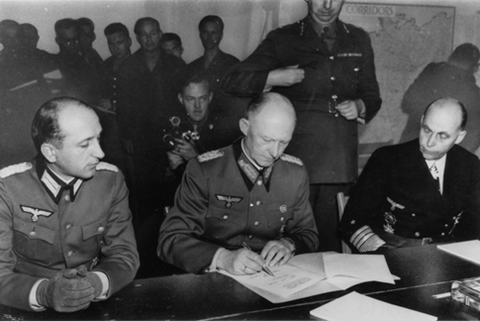
September 2, 1945. General Douglas MacArthur signs as Supreme Allied Commander during formal surrender ceremonies on the USS MISSOURI in Tokyo Bay. Behind General MacArthur are Lieutenant General Jonathan Wainwright and Lieutenant General A. E. Percival
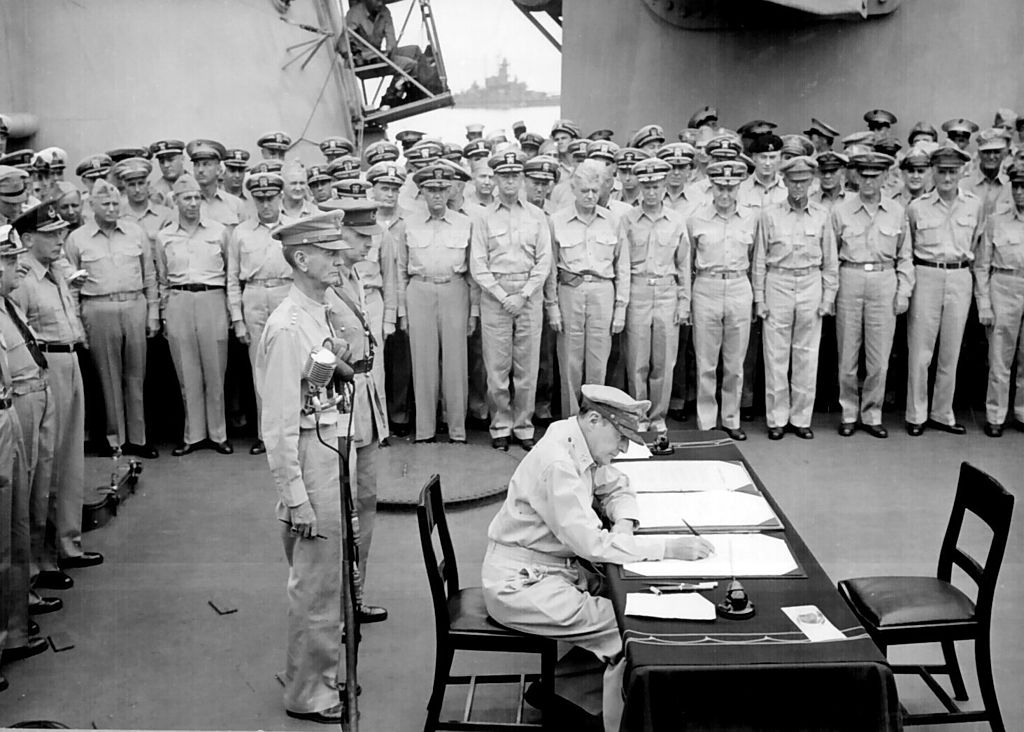 Next Article
Next Article
